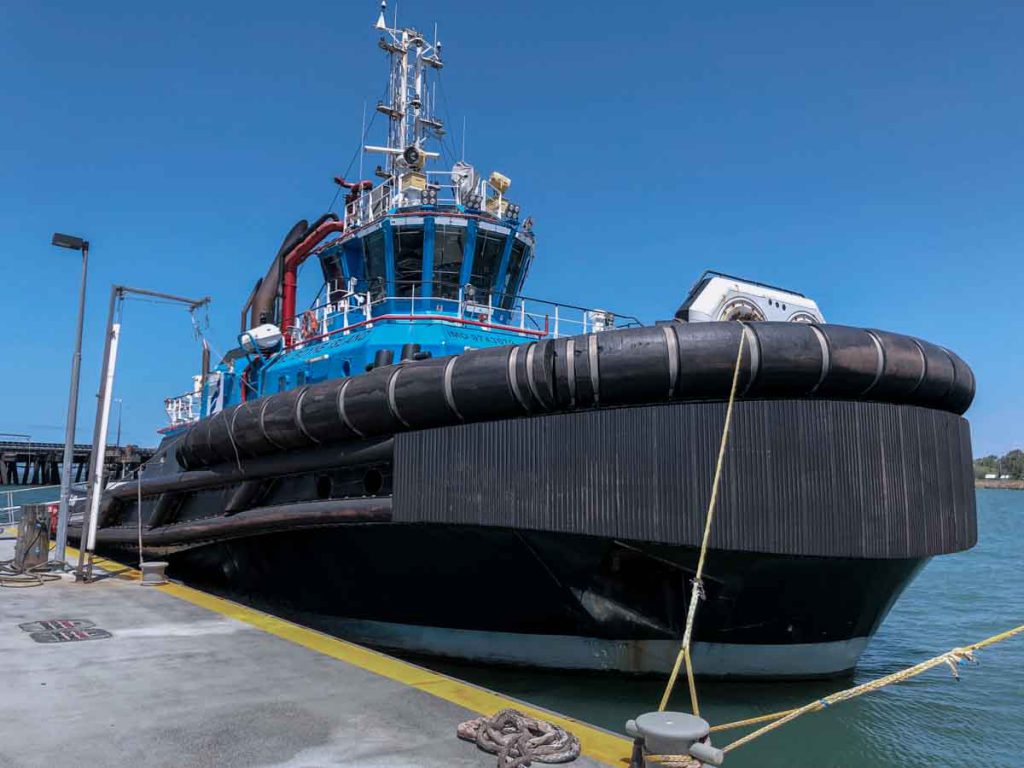ICCP in ship / vessels
Galvanic corrosion is the number one danger enemy to any construction, equipment or vessel in seawater. Our state-of-the-art ICCP marine system will protect your assets. Anywhere. Anytime.

Impressed Current Cathodic Protection (ICCP) for ships
Our ICCP systems for ships consist of sacrificial anodes connected to an external power source. This power source provides the current that leads to the electrochemical reaction required for cathodic protection to take place.
The principal advantage of CORROSION’s ICCP systems for ships is that its extensive checking and control options are directly connected to the vessel management system. This makes it possible to continually monitor, maintain, and fix issues from shore. What’s more, the system adapts even when water conditions change, ensuring the highest levels of protection whatever the circumstances.
The latest technology to ensure the very best protection for your ships, vessels and maritime assets.

Discover the importance of flat mounting ICCP anodes connected to AC/DC converters in ship hulls and/or Offshore (wind) structures along with the need to use dielectric shields for better power distribution and superior corrosion protection.
In the Marine and Offshore industry, protection of assets against corrosion is of paramount importance. The use of Impressed Current Cathodic Protection (ICCP) systems, combined with AC/DC converters, provides effective corrosion protection. When installing ICCP anodes, flush mounting in the hull/monopile is crucial for optimum performance. In addition, incorporation of dielectric shield is mandatory to ensure even current distribution, making the anode more efficient and providing adequate corrosion protection.
Flush mounting of ICCP anodes in the ship’s hull or (offshore) steel structures provides direct contact with the surrounding seawater, thus preventing corrosion as effectively as possible. By connecting ICCP anodes to AC/DC converters, the cathodic protection process can be precisely controlled to adapt to changing environmental conditions.
The use of dielectric shields is necessary to achieve even current distribution over the surface of the hull. This ensures comprehensive corrosion protection even in hard-to-reach areas. By applying proper installation practices, including flush mounting and the use of dielectric shields, vessels benefit from improved corrosion resistance, extending their operational life and reducing maintenance costs. Replacing ICCP anodes can be done underwater by means of applying divers and/or ROVs.
In short, the combination of flush mounting of ICCP anodes and the use of dielectric shields is indispensable to ensure the effectiveness of cathodic protection systems in ship hulls and/or Offshore (wind) structures. By prioritizing these installation practices, maritime operators can effectively mitigate corrosion, protect their assets and promote long-term operational efficiency.
The latest technology to ensure the very best protection for your ships, vessels and maritime assets.

Benefits of Corrosion’s ICCP cathodic system include

Touch screen operation

‘Off potential’ controlled

Coating condition indicator

Propeller shaft monitoring (+alarm)

Automatic system scan

Down-/uploading via SD

Automatic / Manual mode

History of all data in years

3points temperature check of the cabinet (+alarm function)

Connect to vessel Management System via ethernet, RS485 and RS232 (optional)
Downloads
Downloads
FAQ
Impressed current cathodic protection (ICCP) systems are used to protect the metal surfaces of ships exposed to the corrosive effects of the marine environment. ICCP systems consist of sacrificial anodes connected to an external power source. This power source provides the current that leads to the electrochemical reaction required for cathodic protection to occur.
The metal surfaces of ships can be prevented against the corrosive effects of the marine environment to which they are exposed through the use of Impressed current cathodic protection (ICCP) systems. ICCP systems consist of sacrificial anodes connected to an external power source. This power source provides the current that leads to the electrochemical reaction required for cathodic protection to occur.



